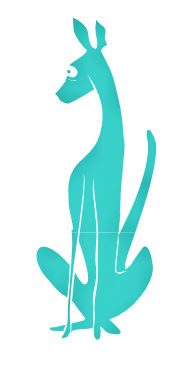PREY DRIVE IN OUR DOGS
The term ‘Prey Drive’ is used to describe the instinctive urge of a carnivore to chase and capture prey. It is a fundamental part of the dog and a healthy prey drive would have ensured survival in the days of its ancestors.
Many owners have difficulty in managing their dog’s prey drive. They feel overwhelmed by this strong canine instinct. When prey drive kicks in the owners report that they are completely ignored by their usually attentive dog, in favour of the car/bicycle/squirrel that has caught their attention.
Some dogs with a very high prey drive and no healthy outlet for it will ‘scan’ the vicinity whilst out walking, constantly looking for ‘prey’, this is often followed by an intense stare as they focus on a moving object/animal, then, if the owner hasn’t caught on and corrected this quickly enough, comes the chase response where the hapless human gets their shoulder wrenched as the dog attempts to chase the object. If the dog is not restrained this may be followed by the dog ‘grabbing’ the object/animal and then ‘killing’ it - metaphorically or otherwise (!). This is very dangerous to the dog if the moving object happens to be a car or a motorcycle, and very dangerous to the object if that object happens to be a cat!
Prey drive varies massively between different breeds, with some aspects of the drive being reduced by selective breeding and some being amplified. For instance the Collie has a very strong urge with regards the searching, watching, stalking and chasing but a much reduced drive to capture and kill. This is what makes them ideal herding dogs. In the case of the Staffordshire bull terrier, the grabbing and biting aspects of the prey drive are more apparent as they were originally bred to bait bulls. The chase and search part were never seen as desirable traits required for bull baiting so they were never bred for and are therefore often less apparent today. Which might explain why so many Bull breed owners complain that their dog is ‘unpredictable’ and ‘just bites out of the blue’? The pre-cursor to the bite will be there somewhere but on a much more subtle level than in other breeds where the strong search, stalk and chase instincts are still intact.
A strong prey drive is an instinctive behaviour and as such it is favourable to redirect it into acceptable behaviours rather than to try to remove entirely. It is a part of the dog and is within all of them, albeit to varying degrees. To try to remove this natural behaviour without offering an alternative outlet would be foolhardy, could lead to frustration and aggression and would more than likely prove unsuccessful anyway.
A high prey drive can be useful though. It can help with trainability as dogs with a strong prey drive are sometimes very willing to chase moving objects such as balls for example. This can be further encouraged to present behaviours desired by humans. In the case of Greyhounds in the racing industry a very high prey drive is prized; it is harnessed by the humans with the use of an ‘electric rabbit’ to produce race winners. Due to the speed required for dog agility, dogs with a high prey drive do well in this area, the ‘chase’ instinct is utilised and the dog is happy having found an outlet for it.
Some dogs with a high prey drive will respond well to rewards and motivators such as a squeaky toy, a game of fetch or tug of war, as these games mimic chasing, catching and killing prey.
Dogs are happiest in situations where their prey drive is satisfied through play and other activities.
It should be noted that predation is not and never will be aggression! Predation is enjoyable and reinforcing to the dog whereas aggression and conflict are not. Evolutionarily this as a self-preservation tactic; to eat is in the dog's best interests, but to fight is not...
Watch your dogs play today and see them practise 'hunting' in their games, watch for the sequence search-eye-stalk-chase-grab hopefully all preceded by a play bow to show that it is all in fun!

